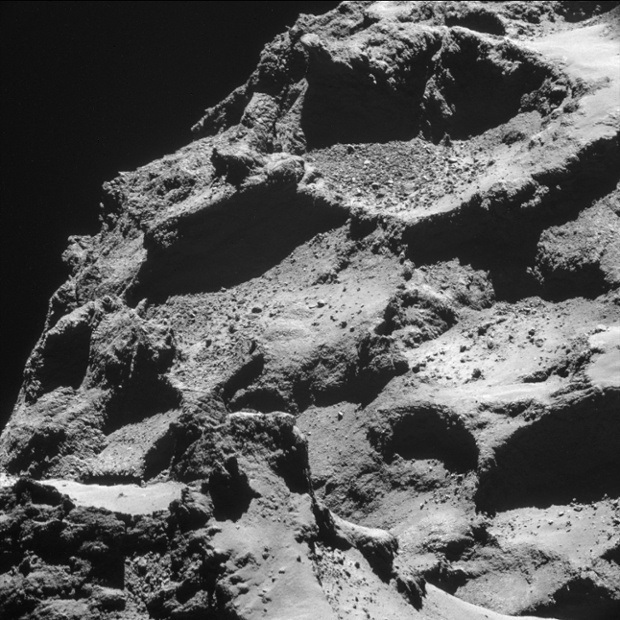We can proudly say today that we have made science fiction a science fact. Rosetta’s Philae spacecraft successfully landed on a comet named 67P/Churyumov–Gerasimenko. A decade-long project called Rosetta Mission undertaken by the European Space Agency (ESA) has achieved what we have seen only in movies like Armageddon. After two recent successful Martian projects (MOM and MAVEN), this is surely a remarkable feat of astronomical proportions. This is a first in space exploration which could help us to unlock the mysteries behind the origin of life. Below are some highlights of the Rosetta Mission up to the landing separation.
The historic journey of Rosetta was completed in 10 years, five months and four days and the total cost of the project is estimated to be around 1.4 billion euros ($1.8 billion). However, after landing the team at ESA tweeted that unfortunately the harpoons which were supposed to anchor the Philae spacecraft to the surface of the comet failed to fire.
One of the main objectives of the Philae lander is to help reveal whether comets like the 67P were responsible to bring water and organic molecules to Earth.
The Comet on which the Philae spacecraft landed is called 67P/Churyumov-Gerasimenko which has a nucleus of about 4 kilometres. It orbits around the Sun every 6.6 years. The comet 67P is nothing less than a relic of the solar system considering the fact that frozen fragments such as these are about 4 to 5 billion years old.
The Philae robotic lander has nine scientific instruments to study the comet. This includes spectrometer, gas analyzer, imaging system, dust impact monitor, etc.
One of the main objectives of the Philae lander is to help reveal whether comets like the 67P were responsible for bringing water and organic molecules to Earth. Thus studying the composition of such comets in detail will significantly increase our understanding of our solar system along with our own planet.

Another major benefit of such missions is that they would boost our confidence in being able to detect and divert any types of comets or asteroid that might collide with Earth. Maybe the study of such comets will also give us some ideas about certain low-energy technologies, some of which could eventually find their way into our gadgets and benefiting humanity in some way. And then there is always a possibility that such missions can bring about unpredictable benefits of good science.
with months of hard work scientists did manage to overcome the hurdles and by August the Rosetta was seen looking for a landing site amongst the giant lumps of ice of the comet.
The mission seemed to be in a jeopardy when the bizarre shape of the comet was revealed in the month of July 2014. Some even thought that the landing on the comet would be impossible. However with months of hard work scientists did manage to overcome the hurdles and by August the Rosetta was seen looking for a landing site amongst the giant lumps of ice of the comet.
After ruling out several dangerous sites, a one-square-kilometer landing site was chosen by the team and named it Agilkia. Separation of the lander took planned on 12th November and touch down was made at 16:09 GMT. “We see the lander sitting on the rock.” Tweeted Andrea Accomazzo, Rosetta’s flight director who has worked on the mission for 18 years.

Rosetta Mission is set to run at least till December 2015. This is just the beginning of a revolution which would help us gather evidences to understand our origin and perhaps also increase the possibility of meeting someone like us in the universe.
-end-

References
Image Source – ESA

































